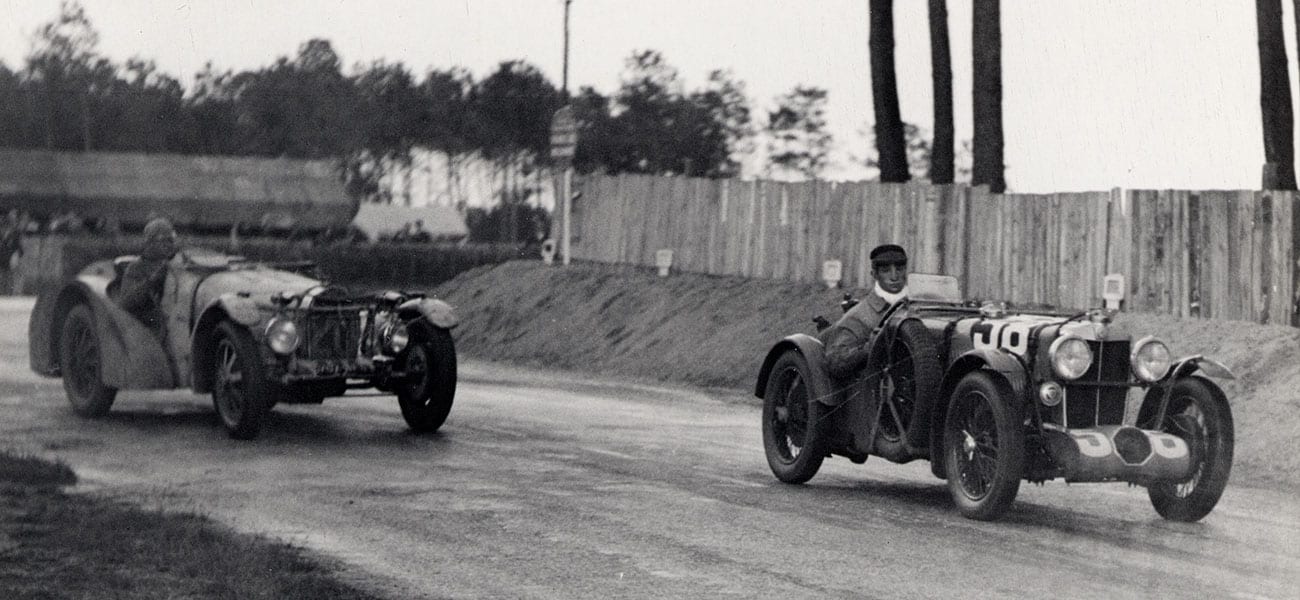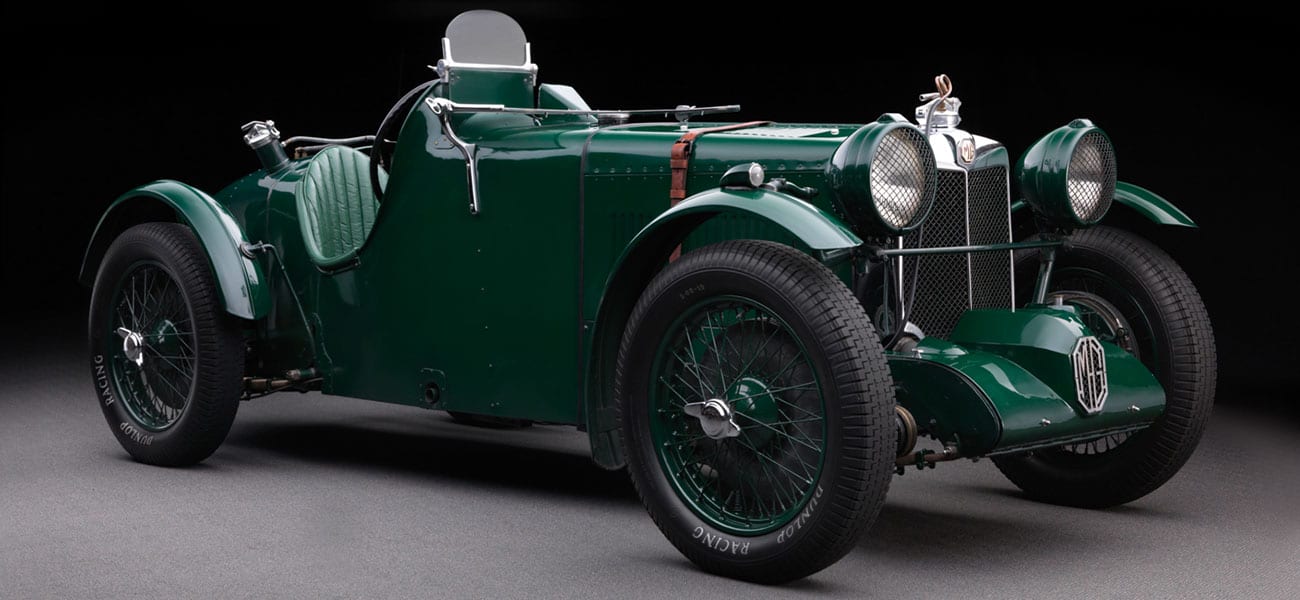Tech Specs
Six-cylinder in-line engine, single overhead camshaft, 1086 cc, up to 120+ bhp at 6500 rpm. Roots-type Marshall supercharger. Four-speed E.N.V. preselector gearbox.
Before/After
1934 MG


About the 1934 MG K3 Magnette
Patriotic generosity, race-bred enthusiasm and shrewd business savvy combined to create the K3 Magnette.
The patriot was Lord Howe, racer of Bugattis, Mercedes and Alfas, who was anxious to get behind the wheel of a competitive English car. The enthusiast was MG chief engineer Cecil Kimber, who ardently believed racing improved the breed. The businessman was Sir William Morris, owner of the MG (née Morris Garages) Car Company, who thought the best publicity was that which didn’t cost him much.
Thus it was, late in 1932, when Lord Howe proposed that if MG would build three racing versions of its Magnette, he would sponsor a team for the Mille Miglia. Kimber and Sir William readily agreed. Six months later, the K3s finished the famed Italian road race one-two in class, winning the team prize, a first for a non-Italian marque. Back home the Prince of Wales attended the celebration dinner.
The K3 Magnette was among the finest sports/racing machines of its time. For ₤795 anyone could buy one – directly from an MG catalogue. Few competition cars were so readily available.
The purchaser of this K3 was sportsman C.E.C. “Charlie” Martin. Eleven days after taking delivery on April 14th, 1934, Martin was at trackside. Worthy performances on home turf that year (including a 93.35 mph average in the Brooklands 500-Mile Race) were capped by a fine drive in the 1100 cc MG at the 24 Hours of Le Mans, where Martin teamed with Roy Eccles to finish 4th overall behind a 2.3 Alfa and two 1 ½-liter Rileys.
Another 1100 cc K3, rebodied as a record car, proved an even more astonishing performer, as Goldie Gardner’s 1939 flying start run on the Dessau Autobahn at 203.54 mph proved.
Few more than 30 MG K3s were built, a figure dwarfed by the legion of victories the car enjoyed and its significance in motor sport history. Many historians regard the K3 Magnette as the quintessential small sports car of the between wars era.
Photos – Peter Harholdt












